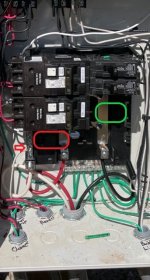- Jul 3, 2013
- 9,027
- Pool Size
- 15000
- Surface
- Vinyl
- Chlorine
- Salt Water Generator
- SWG Type
- CircuPool SJ-40
The closer it is to the equipment the better... I do have one for the whole house in the breaker box and I hope it works for everything in the house and it should work just fine.. But I also have a plug in surge protector on all my equipment inside the house... I lost 2. 1500 dollar TV's when I first moved to Oklahoma because of stray lightning and now I have lost nothing in 8 years since I started doing this...
You want the SPD as close as possible to the equipment your protecting...
You want the SPD as close as possible to the equipment your protecting...


